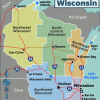Catherine Krouse Bauer Wurster (1905-1964) was a visionary leader and housing reformer who pivotally changed social housing practice and law in the United States, paving the way for women to achieve homeownership. Her work focused on creating affordable, safe, and decent housing for low-income families, particularly in urban areas. Bauer’s efforts helped to shape national housing policy and laid the foundation for future public housing initiatives. Wurster’s advocacy and tireless efforts in the early 20th century were instrumental in breaking down the gender barriers that prevented women from owning homes and acquiring the financial independence that came with it. Her legacy inspires women nationwide who have benefited from her trailblazing work.
Wurster’s Early Life
Born in 1905 in New Jersey, Wurster grew up in a family of German immigrants. Her father, Jacob Bauer, was a highway engineer and architect by trade, having implemented one of the first cloverleaf highway intersections in the country while serving as the Chief Highway Engineer for the State of New Jersey. Following her father’s footsteps, Catherine obtained her undergraduate degree from Vassar College in architecture.
After graduation, Catherine Bauer traveled to Europe and settled in Paris. While in Paris, Catherine befriended prominent artists in the area, such as Man Ray and writer Sylvia Beach. Studying contemporary architecture, housing policy, and city planning, she stumbled upon the work of Swiss-French architect Le Corbusier. Catherine published an article in The New York Times entitled ‘Machine-Age Mansions for Ultra-Moderns’ based on her research and insight into his architecture. In the article, she posed the following questions:
“‘What do we expect of a house?’ Is it a machine for living in, or is it a badge of social distinction, the proof of our taste in historic styles, or the one accomplished poem of our lives?”
During her time in Europe, Bauer observed the economic inequalities that would ignite her desire to provide quality, affordable housing to the American people. She returned to the United States with a renewed focus in 1927. Upon her return, she moved to New York City’s Greenwich Village, working for several publishers and ingratiating herself with the architect community. Having admired the work of Lewis Mumford, the architecture critic of The New Yorker, Wurster befriended him, and he became her mentor in the late 1920s. Inspired by her opinions on housing, Mumford brought Bauer to his informal urban housing group, the Regional Planning Association of America, where her interest blossomed into action.
Where Aspirations Became Actions
During her time in New York, Wurster saw firsthand how difficult it was for women to obtain mortgages and buy homes. In the 1930s, women couldn’t get a mortgage without a male cosigner, and even if they could, they were often discriminated against in terms of interest rates and loan terms. Wurster knew this was unfair and unjust and dedicated herself to changing the status quo.
Modern Housing, Wurster’s first and only book, was published in 1934. The book popularized ideas about housing reform among progressive housing professionals. This book raised awareness of social housing needs for Americans and emphasized the need for government intervention to improve housing conditions. Wurster idealized the simplistic nature of the social housing she studied in Europe and highlighted the many benefits of planned community development in her book.
Her book, along with her promotion of housing sponsored by a builder labor union in Philadelphia, got the attention of the Labor Housing Conference. They hired her to help unions nationwide adopt the prototype of the successful venture in Philadelphia. This move was instrumental in inspiring New Deal public housing projects like those built by the Works Progress Administration (WPA). To this day, Modern Housing is still considered required reading for any budding architect or community development engineer.
Wurster became increasingly involved in the housing movement, working with organizations like the National Housing Association and the National Conference on Housing Standards to improve living conditions for low-income families. She also became a vocal advocate for women’s rights and recognized that homeownership was essential to women’s economic independence.
One of Wurster’s most significant contributions to the housing industry was her work as the primary author of the National Housing Act of 1934 and the Housing Act of 1937, also known as the Wagner-Steagall Act. These acts opened doors for low-income families to obtain housing through subsidy programs and granted specific laws that allowed women to buy homes without needing a male cosigner. The acts also provided federal funding for the construction of public housing projects managed by local housing authorities. Bauer’s influence helped to ensure that the acts included provisions for tenant participation in the management of public housing, as well as regulations to prevent segregation and ensure equal access to housing for all Americans.
Bauer was also appointed a special advisor to the United States Housing Authority (USHA). This agency was created from the Housing Act of 1937 to address the country’s housing crisis. Bauer played a crucial role in shaping national housing policy at the USHA. She argued that the government should actively provide housing for low-income families rather than leave it to the private sector. Bauer also emphasized the importance of designing public housing projects that were aesthetically pleasing and integrated well into their surrounding neighborhoods.
Her work in housing at the government level continued for several years after she left the United States Housing Authority. Her work included consulting and advisory roles with FHA, the Housing and Home Finance Agency, and other state and local housing agencies. Her career spanned three Presidents and became the framework for several of the low-income housing programs that are available today.
Her Later Years
After leaving the USHA in 1938, Bauer continued to work as a housing reformer and wrote extensively on housing policy and urban planning. She also started teaching at the University of California, Berkeley, where she was instrumental in founding the UC Berkeley College of Environmental Design. The school linked urban planning with social housing and architecture, and it paved the way for many current affordable housing programs.
Even though Catherine devoted most of her life to advocating for housing equality and building sustainable communities for low-income families, she always stayed within her passion for architecture. She saw architecture as the impetus for her work as a housing reformer. She decided later in life to shift her focus to helping teach the next generation of house reformers, particularly female architects.
Bauer was involved in the Women’s School of Planning and Architecture’s affiliated organization, the Women’s School Planning and Architecture League, which advocated for better housing and urban planning policies. Through her work with these organizations, Bauer played an essential role in promoting women’s inclusion in architecture and planning.
In 1959, at 59, Wurster died from a fall while hiking in the hills outside Los Angeles. While her death was tragic, her legacy lives on in the extensive work she created during her esteemed career.
The Legacy of Catherine Bauer Wurster
Bauer’s legacy in housing reform is significant. She helped to establish public housing as a legitimate means of providing safe and affordable housing to low-income families, and her advocacy for tenant participation in the management of public housing projects helped to ensure that residents had a voice in decisions that affected their lives. Bauer’s work also emphasized the importance of integrating public housing projects into their surrounding communities rather than isolating them in separate, low-income enclaves.
Catherine Bauer was a pioneering figure in the field of housing reform, whose work helped to shape national housing policy and improve the lives of countless low-income families. Her advocacy for public housing as a means of providing safe and affordable housing to those in need, along with her emphasis on tenant participation and community integration, continues to resonate in the field of housing policy today. Bauer’s contributions to the development of public housing in the United States serve as a testament to her commitment to social justice and her belief in the power of government to effect positive change in the lives of its citizens.
What are your thoughts? Leave a comment below or email the editorial team at [email protected]!














